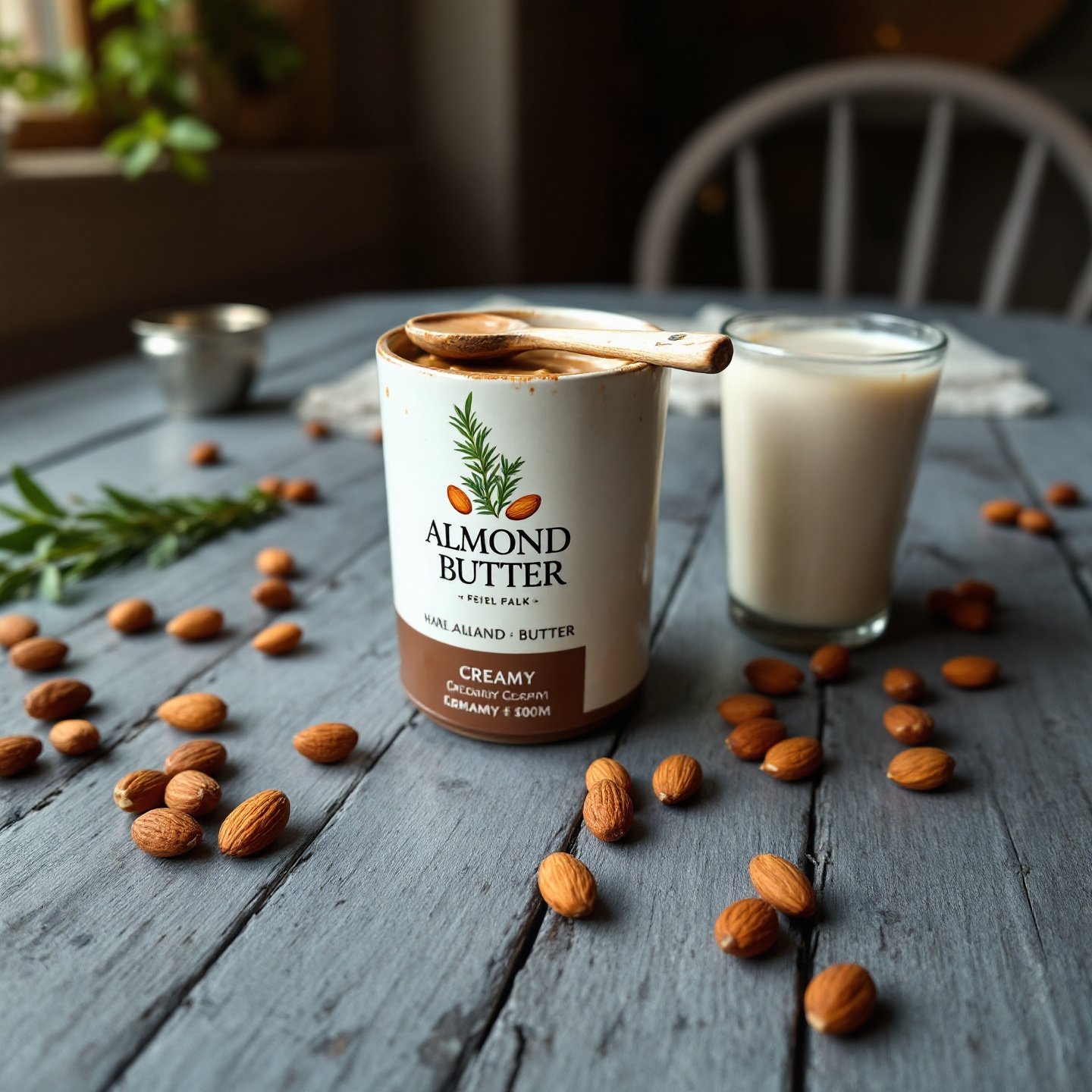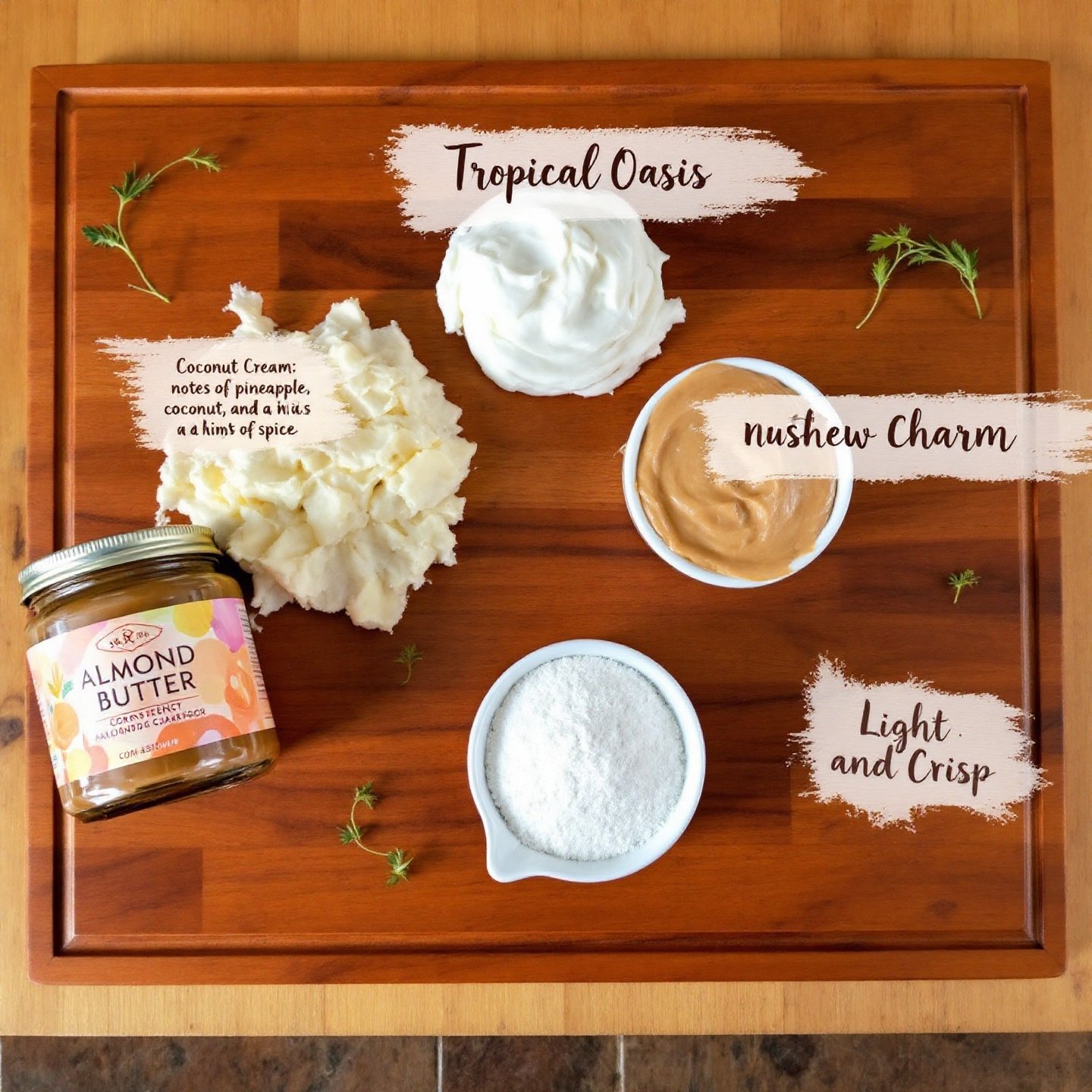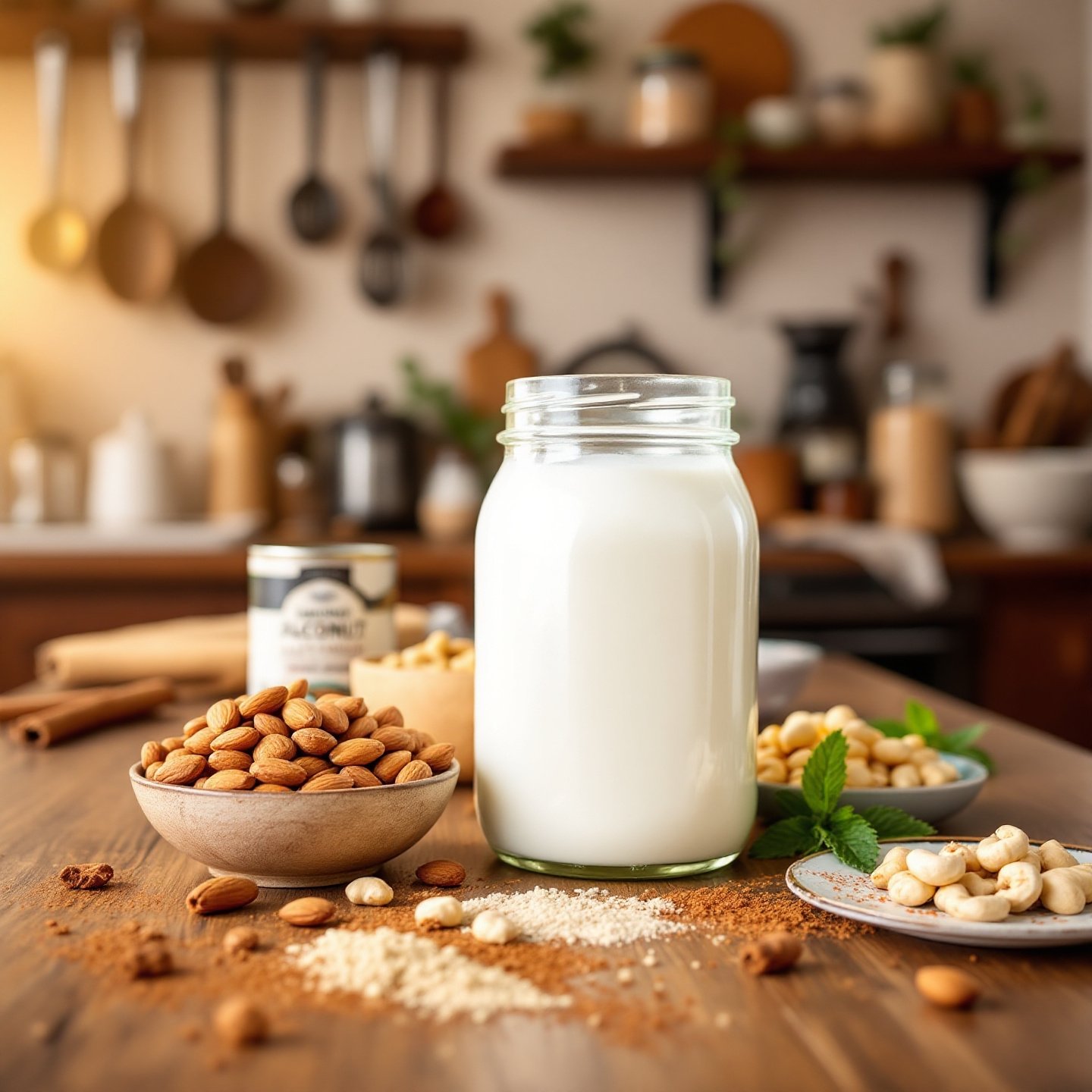Introduction to Making Half-and-Half from Almond Milk
For those seeking a dairy-free half and half option, transforming almond milk into a creamy substitute is both appealing and practical. Traditional half-and-half is a blend of equal parts whole milk and light cream, boasting a fat content of about 10-12% (source). This composition gives it a rich texture, perfect for coffee, sauces, and desserts. However, for individuals who are lactose intolerant or following a vegan diet, finding an alternative that offers the same creamy experience can be challenging.
Almond milk, a popular almond milk substitute, is naturally low in fat, containing only about 1% fat due to its dilution with water. While this makes it a healthy, low-calorie option, it lacks the creamy texture needed to replicate half-and-half. To achieve a similar mouthfeel, almond milk must be enhanced with additional ingredients that can provide the necessary fat content and creaminess.
By combining almond milk with rich, plant-based ingredients, such as coconut cream or cashew cream, you can create a versatile dairy-free half-and-half that meets both dietary needs and culinary expectations. This process not only allows you to enjoy your favorite recipes without dairy but also opens up a world of possibilities for customizing flavors and textures to suit your preferences.
Embarking on this journey to create a homemade almond milk-based half-and-half is not only simple but also rewarding. With just a few steps, you can enjoy a creamy, dairy-free alternative that enhances your coffee, enriches your sauces, and brings delight to your culinary creations.
Understanding the Role of Fat Content in Half-and-Half
When we think about the luscious texture of traditional half-and-half, it’s the fat content that plays a pivotal role. Typically, half-and-half contains around 10-12% fat, which contributes to its rich and creamy consistency. This fat content is essential not only for the texture but also for the mouthfeel, providing a satisfying creaminess that enhances beverages and recipes alike.
Almond milk, on the other hand, is naturally low in fat, with a typical fat content of just about 1%. While this makes it an excellent choice for those watching their calorie intake, it falls short in delivering the creamy texture that half-and-half lovers crave. This is precisely why almond milk alone cannot replicate the luxurious mouthfeel of traditional half-and-half.
To bridge this gap, adding fats from other plant-based sources becomes necessary. Ingredients like coconut cream or cashew cream are often employed to increase the fat content, thereby enhancing the creaminess of almond milk to mimic that of conventional half-and-half. Coconut cream, for instance, is rich in saturated fats, which can thicken almond milk and improve its texture significantly. Similarly, cashew cream offers a neutral flavor and a smooth texture, making it an excellent choice for a creamy almond milk blend.
By understanding the crucial role of fat content in achieving a creamy texture, you can better appreciate why these additional ingredients are essential. This knowledge empowers you to create a dairy-free half-and-half that not only meets dietary restrictions but also satisfies your palate with its creamy, rich texture.
Combining Almond Milk with Coconut Cream
Creating a creamy and satisfying half-and-half substitute using almond milk and coconut cream is a straightforward process that can transform your dairy-free culinary experiences. Coconut cream, known for its rich texture and high saturated fat content, is an excellent companion to almond milk, enhancing its creaminess and providing a luscious mouthfeel similar to traditional half-and-half. Let’s explore how you can easily make this dairy-free creamer at home.
Step-by-Step Guide to Making Almond Milk and Coconut Cream Half-and-Half
- Gather Your Ingredients: For this recipe, you’ll need 1 cup of unsweetened almond milk and 1/2 cup of coconut cream. Ensure the coconut cream is well-mixed to avoid separation, as it tends to solidify at cooler temperatures.
- Combine the Ingredients: In a blender or mixing bowl, combine the almond milk and coconut cream. Blend or whisk until the mixture is smooth and homogenous. This ensures that the fats from the coconut cream are evenly distributed throughout the almond milk, resulting in a consistent texture.
- Adjust Consistency: If you prefer a thicker consistency, you can add more coconut cream. Conversely, for a lighter texture, simply increase the amount of almond milk.
- Flavor Enhancements: For those who enjoy flavored creamers, consider adding a splash of vanilla extract or a pinch of cinnamon to the mixture. These additions can complement the natural sweetness of coconut cream and elevate your dairy-free creamer.
- Store Properly: Transfer the mixture to an airtight container and refrigerate. This homemade almond milk and coconut cream half-and-half can be stored for up to a week, making it a convenient addition to your daily routine.
Benefits of Using Coconut Cream
Coconut cream is not only a great thickening agent but also adds a subtle tropical flavor that can enhance your beverages and recipes. Its high saturated fat content contributes to a creamy texture, making it an ideal choice for those seeking a rich, dairy-free alternative. However, it’s important to be mindful of its caloric and fat content, especially if you’re monitoring your intake (source). Incorporating coconut cream into your almond milk not only provides a deliciously creamy experience but also aligns with a vegan or lactose-free lifestyle.
By following these steps, you can enjoy a versatile and flavorful dairy-free creamer that fits seamlessly into your diet. This combination offers a satisfying alternative to traditional half-and-half, perfect for enhancing your coffee, enriching sauces, or simply adding a touch of creaminess to your favorite dishes.

Using Almond Milk and Cashew Cream
For those seeking a versatile and neutral-flavored alternative to traditional cream, combining almond milk with cashew cream offers a delightful solution. Cashew cream is celebrated for its smooth texture and adaptability, making it an excellent choice for creating a vegan half and half that can be used in a variety of culinary applications.
Why Cashew Cream?
Cashew cream stands out as a superior thickening agent due to its neutral flavor and creamy consistency. Unlike coconut cream, which imparts a distinct taste, cashew cream remains unobtrusive, allowing the natural flavors of your dishes to shine. This makes it particularly ideal for those who prefer a subtle taste in their coffee, soups, or sauces.
How to Prepare Cashew Cream
Creating cashew cream is a straightforward process that requires minimal ingredients and effort. Here’s how you can make it at home:
- Ingredients: Start with 1 cup of raw, unsalted cashews and 3/4 cup of water. These simple ingredients are all you need to create a creamy base.
- Soak the Cashews: Place the cashews in a bowl and cover them with hot water. Allow them to soak for 20-30 minutes. This step is crucial as it softens the cashews, making them easier to blend and resulting in a smoother texture.
- Blend to Perfection: Drain and rinse the soaked cashews, then add them to a high-speed blender along with fresh water. Blend until the mixture is completely smooth, which may take up to 5 minutes. The result should be a thick, creamy mixture that can be used as a base for your almond milk half-and-half.
- Adjust Consistency: If you prefer a thinner consistency, simply add more water to the blender. Conversely, for a thicker cream, reduce the amount of water or add more cashews.
Creating Almond Milk Cashew Cream Half-and-Half
Once your cashew cream is ready, it’s time to combine it with almond milk to create a luscious half-and-half substitute:
- Mixing the Ingredients: In a mixing bowl or blender, combine equal parts almond milk and cashew cream. Stir or blend until the mixture is homogenous and creamy.
- Versatility in Use: This almond milk cashew cream blend can be used in coffee, tea, or as a cooking ingredient in both sweet and savory dishes. Its neutral flavor profile makes it a seamless addition to any recipe.
By integrating cashew cream into your almond milk, you create a dairy-free half-and-half that is not only creamy and rich but also customizable to fit your dietary needs and flavor preferences. This simple yet effective combination opens up a world of possibilities for those embracing a plant-based lifestyle.
Enhancing Almond Milk with Almond Butter
Have you ever thought about transforming almond milk into a rich, creamy delight using almond butter? This simple yet effective method not only thickens almond milk but also enhances its natural almond flavor, making it a perfect addition to various dishes. Whether you’re looking to create a luscious almond butter creamer for your morning coffee or a thick base for smoothies, almond butter offers a convenient and flavorful solution.
Why Use Almond Butter?
Almond butter is a pantry staple that offers a rich, nutty taste and creamy texture. It’s made from ground almonds, which means it retains the nutritional benefits of almonds, including healthy fats, protein, and fiber. By incorporating almond butter into almond milk, you increase the fat content, creating a thick almond milk that mimics the texture of traditional half-and-half. This method is particularly appealing for those who enjoy the robust flavor of almonds in their beverages and recipes.
Step-by-Step Guide to Making Almond Butter Creamer
- Ingredients: You’ll need 2 tablespoons of almond butter and 1 1/2 cups of almond milk. For best results, use a high-quality almond butter that contains no added sugars or preservatives.
- Blend the Ingredients: In a high-powered blender, combine the almond butter and almond milk. Blend on high for about 30-45 seconds until the mixture is smooth and creamy. This process ensures that the almond butter is fully integrated, resulting in a uniform texture.
- Adjust Flavor and Consistency: If you prefer a sweeter creamer, consider adding a splash of vanilla extract or a teaspoon of maple syrup. For a thicker consistency, increase the amount of almond butter or reduce the almond milk slightly.
- Storage: Pour the almond butter creamer into an airtight container and refrigerate. It can be stored for up to 3-4 days, but be sure to shake well before each use as separation may occur.
Using almond butter to enhance almond milk is a straightforward method that not only adds thickness but also enriches the flavor profile. This approach is ideal for those who appreciate the taste of almonds and are seeking a dairy-free alternative that is both delicious and versatile. Whether you’re using it in coffee, smoothies, or as a base for sauces, almond butter creamer offers a delightful twist on the traditional half-and-half.

Adjusting Consistency with Cornstarch
When it comes to thickening almond milk, cornstarch emerges as an invaluable ally. This pantry staple is renowned for its ability to transform thin liquids into creamy, luscious textures, making it ideal for crafting a cornstarch creamer from almond milk. Let’s delve into how you can leverage this simple ingredient to achieve a consistency that rivals traditional half-and-half.
Why Cornstarch?
Cornstarch is a fine, white powder derived from the endosperm of corn kernels. When heated in the presence of moisture, cornstarch molecules swell and form a gel-like consistency, a process known as gelatinization (source). This property makes it an excellent thickening agent for sauces, soups, and, of course, almond milk. Unlike flour, cornstarch is gluten-free, making it a suitable option for those with dietary restrictions.
How to Use Cornstarch to Thicken Almond Milk
- Prepare a Cornstarch Slurry: Begin by mixing 1 tablespoon of cornstarch with 1 tablespoon of cold water. This slurry prevents clumping and ensures even distribution when added to the almond milk.
- Heat the Almond Milk: In a saucepan, gently heat 1 cup of almond milk over medium heat. Stir continuously to prevent scorching and to ensure even heating.
- Add the Slurry: Once the almond milk is warm, slowly pour the cornstarch slurry into the saucepan while stirring constantly. This gradual addition helps integrate the slurry smoothly into the milk.
- Thicken the Mixture: Continue to stir the mixture over medium heat until it becomes thick and bubbly. This usually takes a few minutes. Be mindful not to overcook, as excessive heat can cause the starch to break down, resulting in a thinner consistency (source).
Applications and Tips
Using cornstarch to thicken almond milk is particularly useful for cooking applications where a creamy texture is desired. This method is perfect for creating sauces, soups, or even a rich base for desserts. If you’re aiming for a specific flavor profile, consider adding a pinch of salt or a splash of vanilla extract to the mixture.
Experimenting with cornstarch as a thickening agent offers a simple yet effective way to enhance the texture of almond milk. Whether you’re crafting a velvety sauce or a decadent dessert, this technique provides a reliable path to achieving the desired creaminess.
Flavor Considerations
When crafting a half-and-half substitute using almond milk, the choice of thickening ingredients significantly impacts the almond milk flavor. Each thickener not only alters the texture but also subtly influences the taste, which can enhance or detract from your culinary creations. Understanding these flavor dynamics is essential for selecting the right combination for your specific needs, whether it’s for coffee, cooking, or baking.
Flavor Profiles of Common Thickeners
- Coconut Cream: This ingredient is known for its rich, tropical flavor. While it adds a creamy texture, it also imparts a distinct coconut taste, which can complement desserts and tropical-themed dishes but may overpower delicate flavors in coffee or soups.
- Cashew Cream: Offering a more neutral taste, cashew cream blends seamlessly into most recipes without altering the original flavor. This makes it an excellent choice for those seeking a versatile thickener for both sweet and savory dishes.
- Almond Butter: Enhancing the natural almond essence, almond butter intensifies the nutty flavor, making it ideal for recipes where a robust almond taste is desired, such as in smoothies or almond-flavored desserts.
- Cornstarch: As a flavorless thickener, cornstarch is perfect for applications where maintaining the original taste is crucial, such as in sauces or soups. It allows the primary ingredients to shine without interference.
Choosing the Right Combination
When deciding on the best thickening agent for your creamy almond milk recipes, consider the intended use:
- Coffee: Opt for cashew cream or a small amount of coconut cream for a creamy texture without overwhelming the coffee’s natural aroma.
- Cooking: Use cornstarch or cashew cream for soups and sauces where a neutral flavor is desired.
- Baking: Almond butter can enhance nutty desserts, while coconut cream can add richness to tropical or chocolate-based recipes.
By thoughtfully selecting your thickening ingredients, you can customize the flavor profile of your almond milk half-and-half to suit any culinary application, ensuring a delicious and satisfying outcome every time.

Storage and Shelf Life of Almond Milk Half-and-Half
Ensuring the longevity and quality of your homemade almond milk half-and-half is crucial for maintaining its creamy texture and flavor. Proper almond milk storage techniques can make all the difference, especially given the absence of preservatives in homemade versions.
Refrigeration is Key
Once you’ve crafted your almond milk-based half-and-half, it’s vital to store it in the refrigerator. Use a sealed jar or container to protect it from exposure to air, which can accelerate spoilage. Homemade almond milk creamer typically lasts about five days in the fridge, but always rely on your senses—check for any off smells or changes in texture before use.
Freezing for Extended Shelf Life
If you need to extend the homemade creamer shelf life, consider freezing it. Divide the creamer into small portions using an ice cube tray or airtight containers, which allows you to thaw only what you need. Keep in mind that freezing may cause separation, so a quick blend or stir after thawing can help restore its consistency.
Practical Usage Tips
To avoid waste, incorporate your almond milk half-and-half into various recipes. Use it in baking, smoothies, or even as a base for creamy soups. This flexibility ensures you make the most of your homemade creamer while enjoying its rich flavor across different dishes.
By following these storage tips, you can enjoy your almond milk half-and-half at its best, minimizing spoilage and maximizing flavor.
Conclusion: Embrace the World of Dairy-Free Cooking
Creating a dairy-free half-and-half substitute using almond milk opens up a world of culinary possibilities. This approach not only caters to those with dietary restrictions but also to anyone looking to reduce their dairy intake for health or environmental reasons. The various methods discussed, from using coconut cream to cashew cream, offer diverse flavors and textures, allowing you to tailor your creations to your specific needs and preferences.
Experimentation is key in finding the perfect balance for your homemade half-and-half. By trying different combinations, you can discover the ideal blend that suits your palate, whether it’s for a morning coffee, a creamy sauce, or a delightful dessert. The versatility of almond milk as a base ingredient ensures that your dairy-free cooking adventures are both rewarding and delicious.
For those who are enthusiastic about homemade plant-based milk, exploring the latest advancements in plant milk makers can be a game-changer. These appliances simplify the process, offering convenience and consistency in your dairy-free creations. If you’re interested in diving deeper into this realm, consider checking out the top plant milk makers of 2025, where you can find options that best suit your needs.
By embracing dairy-free cooking and experimenting with almond milk, you not only enhance your culinary repertoire but also contribute to a more sustainable and health-conscious lifestyle. So, why not start today and explore the rich, creamy possibilities that await?
FAQs on Making Half-and-Half from Almond Milk
1. How do you thicken almond milk for creamer?
To thicken almond milk for creamer, mix cornstarch with a small amount of cold almond milk to create a slurry. Heat the remaining almond milk and gradually add the slurry, stirring constantly until it thickens. This method is ideal for achieving a creamy texture suitable for coffee or cooking.
2. Can you use almond milk as a substitute for half-and-half?
While almond milk alone is too thin to substitute for half-and-half, it can be combined with ingredients like coconut cream or cashew cream to mimic the creamy texture of traditional half-and-half, making it suitable for coffee, sauces, and desserts.
3. What is the best way to store homemade almond milk half-and-half?
Store homemade almond milk half-and-half in an airtight container in the refrigerator for up to five days. For longer storage, freeze in small portions and blend after thawing to restore consistency.
4. Does almond butter enhance the flavor of almond milk?
Yes, adding almond butter to almond milk enriches its natural almond flavor while also increasing the fat content, creating a thicker, creamier texture. This is especially useful for making a flavorful creamer or base for smoothies.
5. How can I make a vegan half-and-half using almond milk?
To make a vegan half-and-half, blend almond milk with cashew cream or coconut cream. These ingredients add the necessary fat and creaminess to replicate traditional half-and-half, perfect for vegan recipes.
